
Lot 54
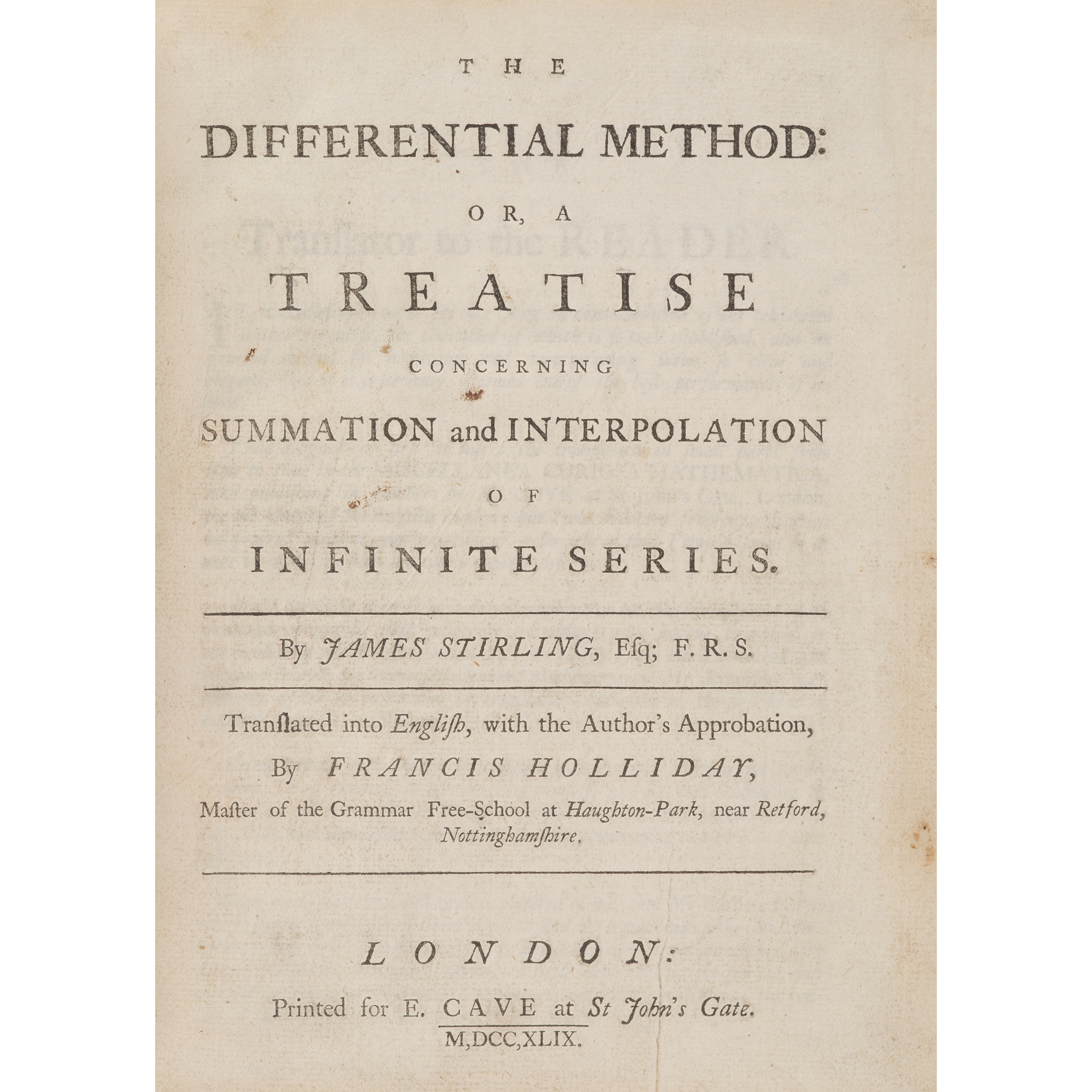
Stirling, James
The Differential Method
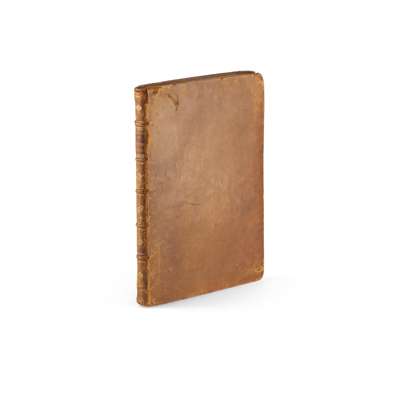
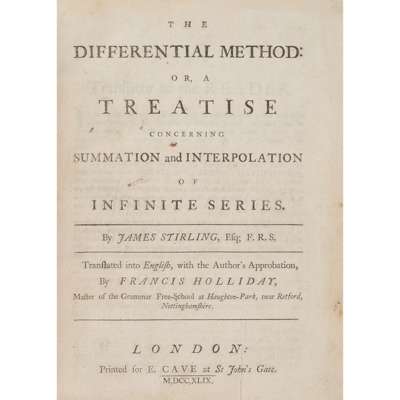
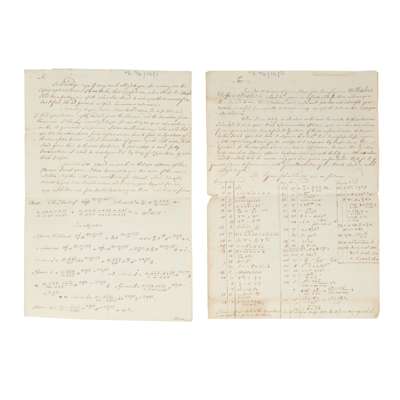


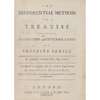
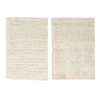
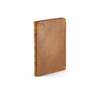
The Library of James Stirling, Mathematician
Auction: 23 October 2025 from 13:00 BST
Description
or, a Treatise concerning Summation and Interpolation of Infinite Series. Translated into English, with the Author's Approbation, by Francis Holliday. London: for E. Cave, 1749. 4to in half-sheets (23.1 x 17.5cm), contemporary sprinkled calf with gilt lozenges and beaded rules to spine-compartments, viii 141 pp., advertisement leaf at rear, with 2 laid-in autograph letters signed from Francis Holliday to James Stirling (each a foolscap bifolium, 3 and 4 pp., first letter addressed to Stirling at Leadhills and dated 15 April 1747, with a few tears, the second undated but evidently addressing Stirling's response to the first letter) [ESTC N6849; Wallis 307.885]
Footnote
First edition in English of Stirling's masterpiece and ‘principal mathematical work’ (ODNB), which introduced the Stirling numbers and Stirling's formula, and which first published in Latin in 1730 as Methodus differentialis. This copy contains two important letters to Stirling from the translator Francis Holliday, a Nottinghamshire schoolmaster and clergyman whose works include An Introduction to Fluxions (1777). The first, dated April 1747, provides a list of typographical errors in the 1730 edition, evidently at Stirling's request, and mentions the opinion of some eminent London mathematicians that the Methodus 'no where had shewn from a given series how to find the equations of the successive terms'. In the second letter Holliday thanks Stirling for drawing his attention to further errors which he had not noticed (‘I had been pretty sure of all when I ventured to send you the account of ’em, but I find the old proverb verified, humanum est errare'), before providing a lengthy demonstration of ‘some new forms for fluents’. Holliday describes in the preface to his translation how ‘Being unwilling to commit any mistakes … I had recourse to Mr Stirling himself, and he was so obliging as to give me all the assistance I needed'. Stirling is known to have been dissatisfied with the first edition of the Methodus: in a letter to Swiss mathematician Gabriel Cramer he blamed a rushed printing process for a large number of errors, and his personal working copy (see the previous lot) contains corrections to some 50 pages.
The Methodus differentialis was a greatly expanded version of Stirling's paper ‘Methodus differentialis Newtoniana illustrata’, which was read to the Royal Society in 1719 in response to Newton's own ‘Methodus differentialis', itself written in 1676 but not published until 1711. ‘The Methodus differentialis … is surely one of the early classics of numerical analysis. It contains not only the results and ideas for which Stirling is chiefly remembered today (the Stirling numbers, Stirling’s interpolation formula, Stirling's formula for ln n!), but also a wealth of material on transformations of series and limiting processes. Inverse factorial series, especially hypergeometric series, are much in evidence and asymptotic series … also appear. Interpolation and quadrature are discussed and there is an impression collection of calculations throughout to illustrate the efficacy of the methods presented. Stirling's book was well received by his contemporaries … [and] the book's influence has extended over more than two and a half centuries' (Tweddle, p. 1).
Literature:
Ian Tweddle (ed.), James Stirling's Methodus Differentialis: An Annotated Translation of Stirling's Text, London, 2003.
Niccolo Guicciardini, The Development of Newtonian Calculus in Britain 1700-1800, Cambridge, 1989, p. 33 et seq.







